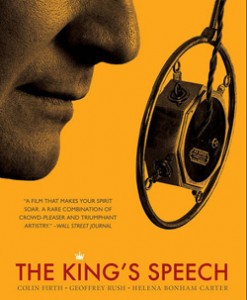 Any quick scan of YouTube reveals a dizzyingly inconsistent array of movie and TV show clips. In theory, clips should only be uploaded by the copyright holder, but movie studios and media conglomerates have a range of attitudes on what can and can’t be uploaded by fans under the remit of “Fair Use”.
Any quick scan of YouTube reveals a dizzyingly inconsistent array of movie and TV show clips. In theory, clips should only be uploaded by the copyright holder, but movie studios and media conglomerates have a range of attitudes on what can and can’t be uploaded by fans under the remit of “Fair Use”.
Fair Use is the legal principle that allows others to quote excerpts from copyrighted work for the purposes of “criticism, comment, news reporting, teaching, scholarship, and research.” Given that “scholarship and research” has never been a prime function of YouTube, in the early days of the site, major movie studios were quite aggressive about getting clips taken down. However, around 2008, studios realised the power of viral videos and interactive marketing (posting clips for people to comment on) and shifted their position. Martin Anderson explores the ramifications in an in-depth feature over at Shadowlocked.
It was the time of Facebook-for-everyone, the time when ‘viral marketing’ transited from the water-cooler to the company policies of PR sites; a time when it began to occur to the major studios that they might consider the harsh object-lesson learnt by the music companies’ eternal take-down war with the MP3 uploaders – particularly since their own product could not be encapsulated in the 10-minute limits of a YouTube upload (recently extended to 15 minutes for many users, though to little practical difference, in these circumstances).
Young people, people far cooler than they were, the very people whose wallets, purses and general esteem the media giants were desperate to invade, were out there doing work and getting product-coverage that their own marketing departments would have killed to achieve by conventional methods. They weren’t getting a dime for all this work, and to boot they could now be completely controlled by the Content ID architecture.
The ContentID software allows the automated tracking of clips. It scans content and matches it back to a database, so that copyright holders can
* Identify user-uploaded videos comprised entirely OR partially of their content, and
* Choose, in advance, what they want to happen when those videos are found. Make money from them. Get stats on them. Or block them from YouTube altogether.
Curious, Anderson tried uploading clips from different properties to see what the reaction would be:
NBC Universal’s North American stake on the excellent 2008 black comedy In Bruges meant that my clip upload was blocked in the US, while Lionsgate decided to monetise my uploaded clip of 2003’s The Grudge by adding commercials. NBC Universal banned my uploaded clip of Jurassic Park: The Lost World all over the world, though they seem able to tolerate a 16-second clip.
Anderson also identifies several YouTube users who only post HQ clips from movies during the promotional period of a DVD or theatrical release. Genuine fans or studio sock puppets?
As audiences become more and more resistant to traditional forms of advertising, it seems that media providers have their eye on “user” generated content as a way of getting their message across. The whole ethos of YouTube is ‘Broadcast Yourself’, and it would be a shame if that spirit was lost in a slurry of marketing videos produced by the media institutions who have a stranglehold on all our other channels of communication in the first place.
US Copyright Office on Fair Use
YouTube and the major film studios – Shadowlocked
YouTube’s Content ID



